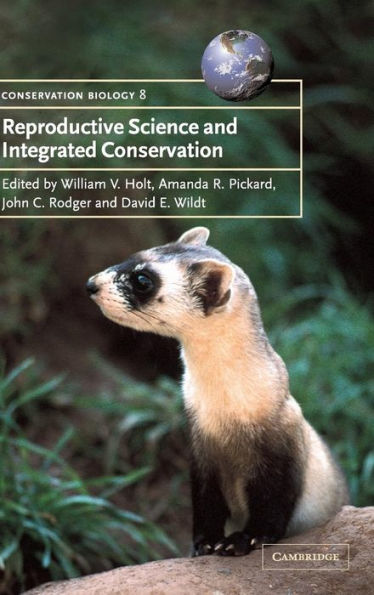Table of Contents
List of contributors; Foreword Richard Stone; Part I. Introduction: 1. Toward more effective reproductive science for conservation David E. Wildt, Susie Ellis, Donald Janssen and Jennifer Buff; Part II. Reproduction and Population Viability: Introduction; 2. Behaviour and reproduction Alan Dixson, Nancy Harvey, Marilyn Patton and Joanna Setchell; 3. Nutrition and its interaction with reproductive processes Tom G. McEvoy and John J. Robinson; 4. Environmental chemicals and the threat to male fertility in mammals: evidence and perspective Helen S. Baillie, Allan A. Pacey and Harry D. M. Moore; 5. Assessing the consequences of inbreeding for population fitness: past challenges and future prospects Andrea C. Taylor; 6. Impacts of inbreeding on components of reproductive success Karen Koeninger Ryan, Robert C. Lacy and Susan W. Margulis; 7. The major histocompatibility complex (MHC) in declining populations: an example of adaptive variation Philip Hedrick; 8. When is the birth rate the key factor associated with population dynamics? Tim Coulson and Elodie Hudson; Part III. Reproductive Techniques for Conservation Management: Introduction; 9. Reproductive and welfare monitoring for the management of ex-situ populations Amanda R. Pickard; 10. Non-invasive endocrine measures of reproduction and stress in wild populations Steven L. Monfort; 11. Ultrasound for analysis of reproductive function in wildlife species Thomas B. Hildebrandt, Janine L. Brown, Robert Hermes and Frank Goritz; 12. Role of embryo technologies in genetic management and conservation of wildlife Naida M. Loskutoff; 13. Application of nuclear transfer technology to wildlife species J. K. Critser, L. K. Riley and R. S. Prather; Part IV. Integrated Conservation Management: Introduction; 14. Integrating reproductive sciences into recovery programmes for declining and extinct marsupial populations Peter D. Temple-Smith; 15. Captive breeding and predator control: a successful strategy for conservation in Western Australia Terry Fletcher and Keith Morris; 16. Black-footed ferret: model for assisted reproductive technologies contributing to in situ conservation JoGayle Howard, Paul E. Marinari and David E. Wildt; 17. Genetic resource banks for species conservation W. V. Holt, Teresa Abaigar, P. F. Watson and D. E. Wildt; 18. Fertility control for wildlife John C. Rodger; 19. Contraceptive vaccine development Karen E. Mate and Lyn A. Hinds; 20. Field applications of fertility control for wildlife management Phil Cowan, Roger Pech and Paul Curtis; Part V. Reproductive Science in Non-Mammalian Species: Introduction; 21. Reproductive technologies and challenges in avian conservation and management Ann M. Donoghue, Juan Manuel Blanco, George F. Gee, Yvonne Kirkby and David E. Wildt; 22. Reptile reproduction and endocrinology Valentine A. Lance; 23. Reproductive research and the worldwide amphibian extinction crisis Terri L. Roth and Amy Obringer; 24. Reproduction in fishes in relation to conservation Gordon McGregor Reid and Heather Hall; Part VI. Conclusion: 25. Postscript - sex, wildlife and vindication W. V. Holt, A. R. Pickard, J. C. Rodger and D. E. Wildt; Index.






